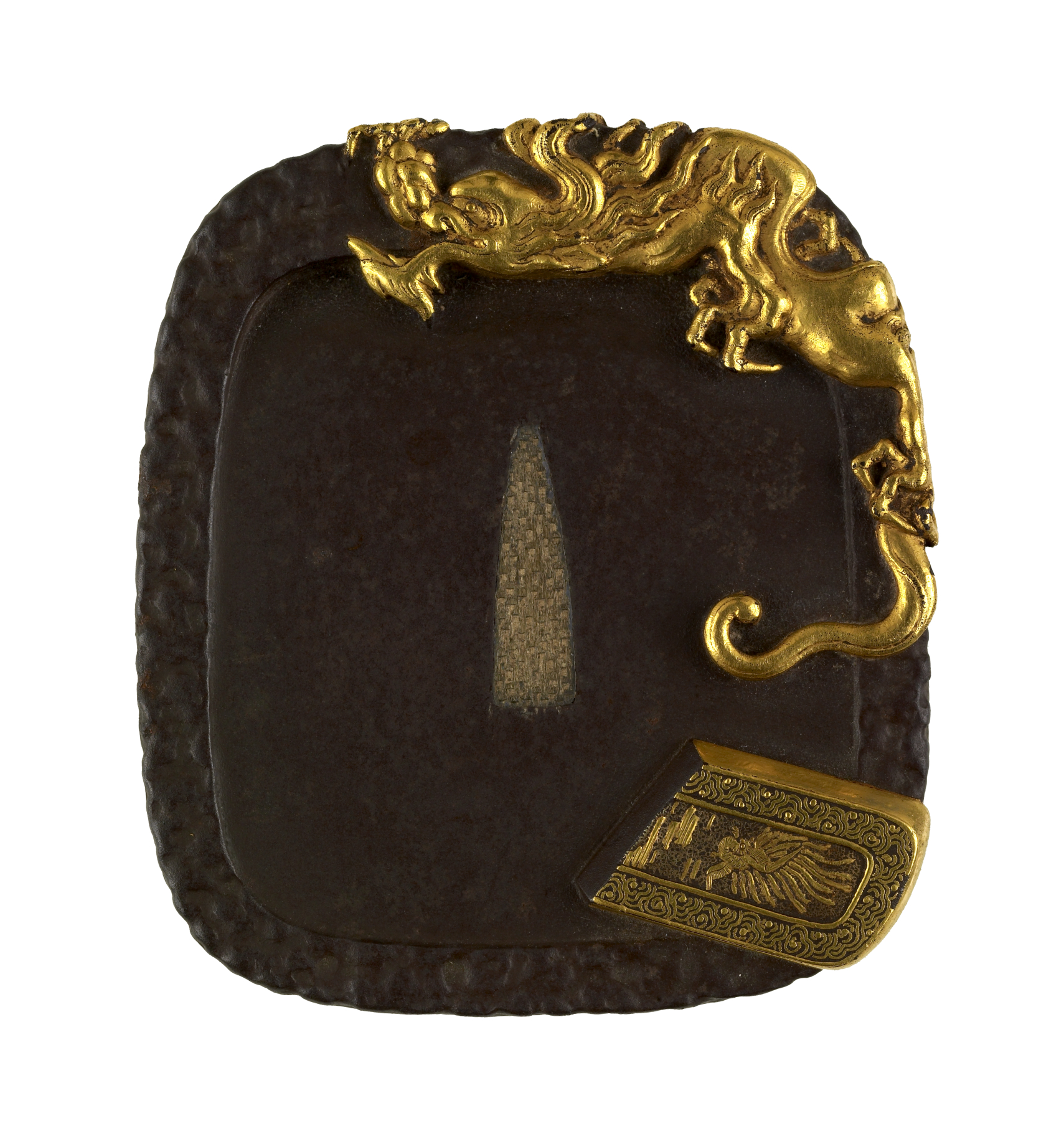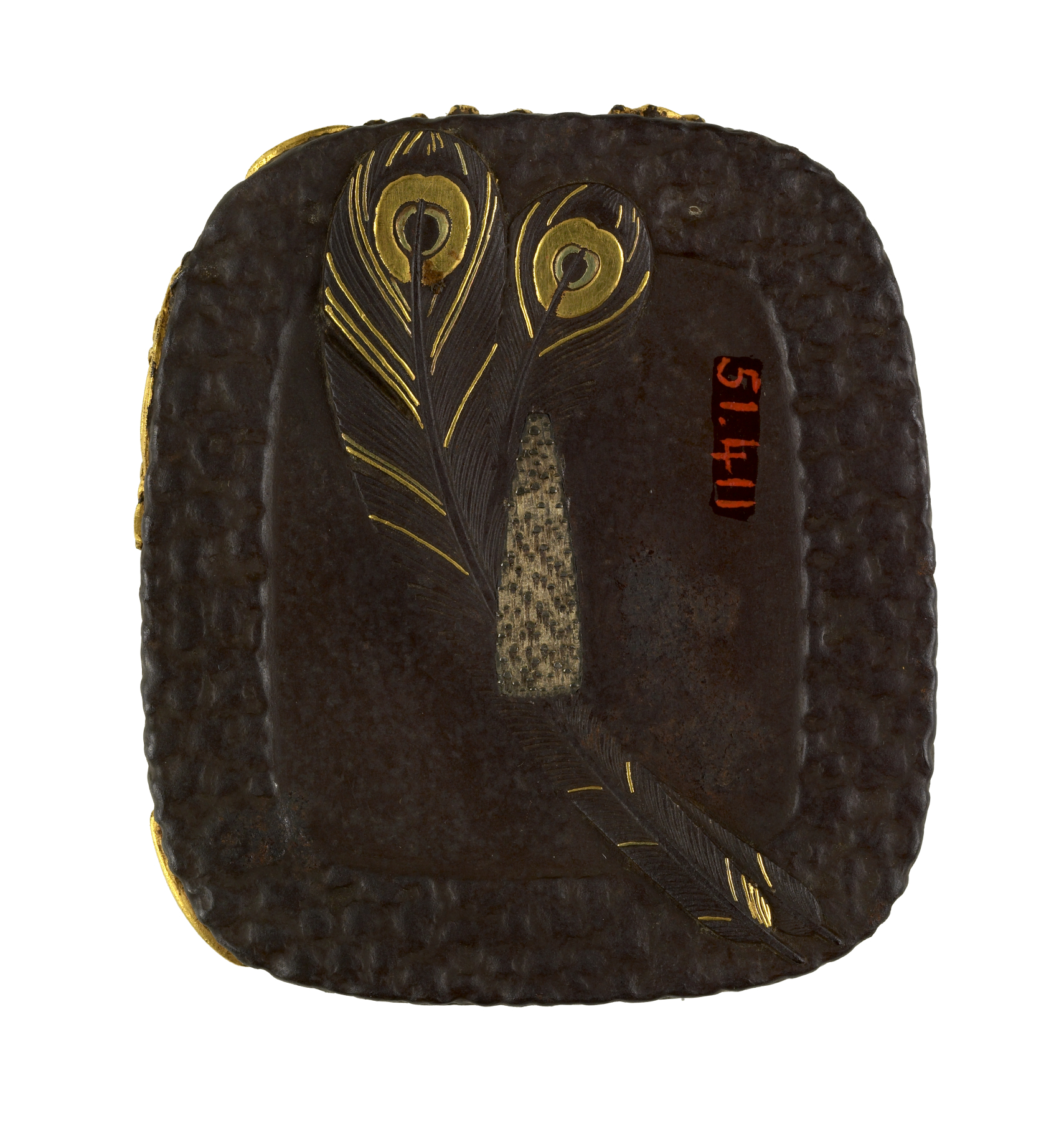Tsuba in the Shape of an Inkstone with Inkstick
(Japanese Military Armor)
This tsuba has a raised rim that gives it the appearance of an inkstone. The upper right is decorated with a dragon. At the lower right is an inkstick decorated with a phoenix. Rather than purchasing liquid ink ready to use, individuals would make their own ink by grinding an inkstick in an inkstone to which a little water had been added. Only enough of the stone would be ground to create ink for the immediate use. On the reverse of the tsuba are peacock feathers decorated with gold enamel. The central opening for the blade has been plugged. This tsuba appears to be unused.
Inscription
Provenance
Provenance (from the French provenir, 'to come from/forth') is the chronology of the ownership, custody, or location of a historical object.
Henry Walters, Baltimore [date and mode of acquisition unknown]; Walters Art Museum, 1931, by bequest.
Geographies
Japan (Place of Origin)
Measurements
3 1/8 in. (7.9 cm)
Credit Line
Acquired by Henry Walters
Location in Museum
Not on view
Accession Number
In libraries, galleries, museums, and archives, an accession number is a unique identifier assigned to each object in the collection.
In libraries, galleries, museums, and archives, an accession number is a unique identifier assigned to each object in the collection.
51.411




